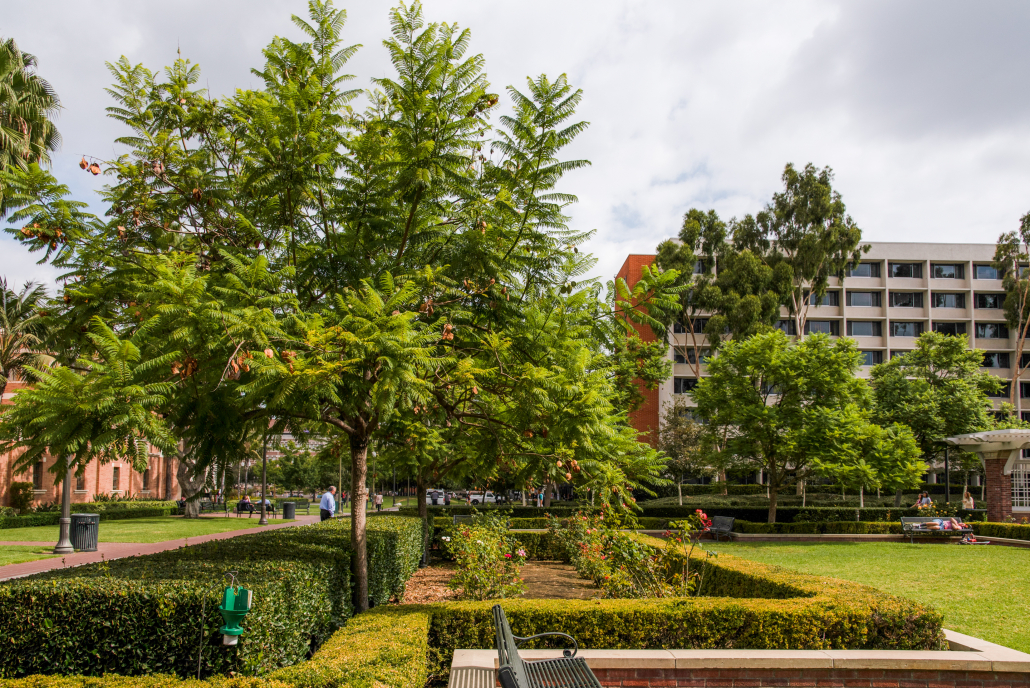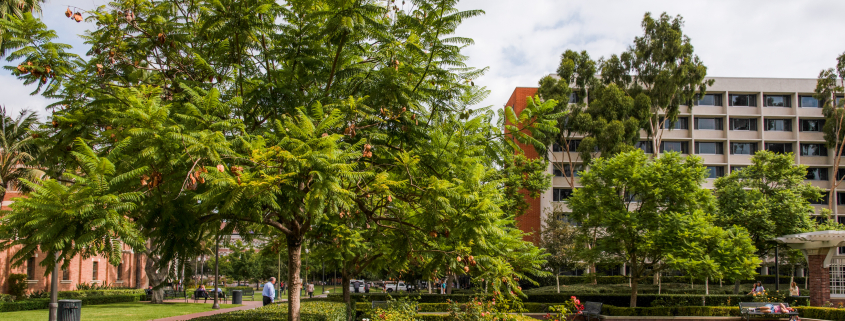USC gets silver ranking

Following the implementation of new sustainability measures since the start of President Carol Folt’s tenure, USC received its first evaluation from The Sustainability Tracking, Assessing, and Rating System, “a transparent, self-reporting framework for colleges and universities to measure their sustainability performance.”
After the recent implementation of new sustainability boxes located around the USC Village, USC’s divestment from fossil fuels, solar panels, and signs around campus advertising USC Green Week, the University took it upon themselves to complete the STARS assessment. The University received a silver star ranking — the highest rank being a platinum star ranking — which is earned by about a quarter of universities completing the report. Around 1000 universities, including Princeton, Stanford, MIT and the UC system, also use STARS.
“A silver rating was higher than [USC officials] were initially expecting and reflects the hard work that many members of our community have put in over the last few years,” Chief Sustainability Officer Mick Dalrymple said in a communitywide email Wednesday. “It also reflects the tireless efforts of our many campus partners who provided the necessary data for our STARS assessment.”
To receive the STARS rating, USC underwent a year-long process that involved data collection to measure the University’s energy and water consumption, vehicle trips, supply chain and other sustainability factors.
The University plans to continue going through the STARS test regularly, according to Dalrymple. The STARS rank is also an important step in achieving USC’s 2028 Sustainability Plan, which “will include aggressive goals focused on climate neutrality, zero waste, single-use plastics reduction, inclusion, engagement, and enhanced sustainability curriculum and research efforts,” wrote Dalrymple.
Kathleen Verendia, a senior majoring in environmental studies with an emphasis in sustainability, serves as the executive director of the Environmental Student Assembly. Verendia is particularly excited about USC’s plan to include environmental ethics and sustainability into the curriculum of all the University’s schools. Verendia said she also hopes the move toward sustainability will set an example for the importance of sustainability within our generation.
“It’s important to be mindful of the decisions that we’re making, because even if our decisions seem small or minute; it’s really about changing our mindset,” Verendia said. “I think you need to be mindful of your consumption, and what you’re investing your time and your education in.”
Although the University made progress in setting its first sustainability goals since 2015, several areas need improvement for the University to receive a higher STARS rating, such as sustainable building design, construction and sustainable procurement — including a preference for bio-based materials, implementation of carbon neutral products and the support of disadvantaged businesses.
There are already an array of changes being made to improve sustainability since the STARS report data was collected.
“The LED lights [the University is implementing] are going to help us by reducing our emissions, and then we’ve got water meters that have recently been put in,” Dalrymple said. “We’re also looking at electric vehicles and putting in more electric vehicle charging stations, and then we’re looking at doing more solar [power].”
As USC works toward achieving its 2028 Sustainability Plan that will be released next year, Dalrymple wrote the rank creates a “starting point,” and the University is “setting much more lofty goals for achieving sustainability across our institution and will continue to work towards new and innovative ways to achieve those goals.”
Dalrymple credits the student push for sustainability’s huge impact on campus, complimenting the push from environmental organizations and student activists.
“It’s great that the students have been engaged and have been speaking out,” Dalrymple said. “We want to keep them engaged, keep them informed, make sure that they’re teaching the underclassmen and keep that culture of sustainable behavior, as well as education and awareness.”
Dalrymple is enthusiastic about the University’s growth demonstrated in the STARS report, but sees more to do on the road to achieving its sustainability goals in an assortment of categories where the University did not perform as well, such as academic curriculum, waste minimization, and investment.
“I felt like it was a really good place, to come across with a medium to high silver score on a first try with STARS was pretty impressive, and then also at the same time it leaves room for improvement,” Dalrymple said.
Correction: A previous version of this article said the highest rank a school can win is gold. The highest rank a school can win is platinum. The Daily Trojan regrets this error.

